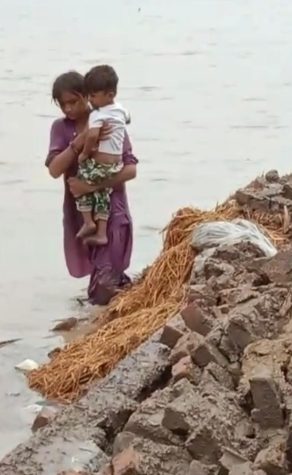What’s happening in Pakistan
October 31, 2022
The Indus River flows from the Himalayas south to the Arabian Sea. It cuts through the four main provinces of Pakistan: Sindh, Balochistan, Pakhtunkhwa, and Punjab.
Typically, the mountains of Pakistan receive a little over 50 millimeters (about 2 inches) of rain from July to August during the monsoon season, according to the Climate Change Knowledge Portal. Hence, Pakistan expected some swelling of the Indus River, but this year was different.

The turbulent storm started a month earlier than usual – its damages unprecedented. The Washington Post reported that Pakistan received 190% of its typical rainfall this year alone. As a result of this massive influx of rain, the most desperate of Pakistan are experiencing life-threatening flooding and detrimental problems.
In a recorded interview with Sky News, Pakistan’s climate change minister Sherry Rehman referred to this year’s monsoon as a monster.
Not only that, but Pakistan houses 7,253 glaciers.
Rising temperatures accelerate glacial melt, and flooding is inevitable with all this extra water dumping into the river system. The overflowing Indus River unleashed currents of unfathomable power that swept away bridges and other critical infrastructure.
Pakistan’s infrastructure was not very strong in the first place, and the country’s economy ranks in the bottom 50th percentile globally. Given the lack of budget for infrastructure, the damage will take years to recover from, especially combined with Pakistan’s turbulent politics.
In early 2022, Pakistan’s former Prime Minister and founder of Pakistan Tehreek-e-Insaf (PTI), one of the country’s most prominent political parties, Imran Khan, was ousted from office due to conflicting interests in the Pakistani government.
There’s also another thing working against the people of Pakistan: disease, and it’s in the water.
According to Reuters, dysentery, dengue fever, and malaria took the lives of about 800 people. In Sindh, the hardest-hit province, cholera infects and kills small children daily.
The severe flooding cut off communication, accessibility to food and clean water, and healthcare, among other necessities.
As a result, nearly a third of Pakistan was underwater, leaving 1 million people with sodden homes, scrambling from island to island for resources.